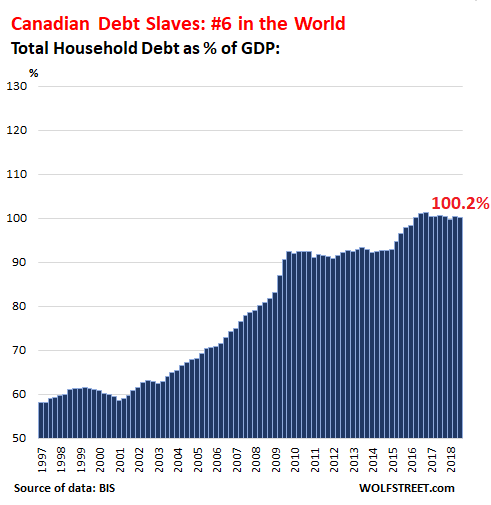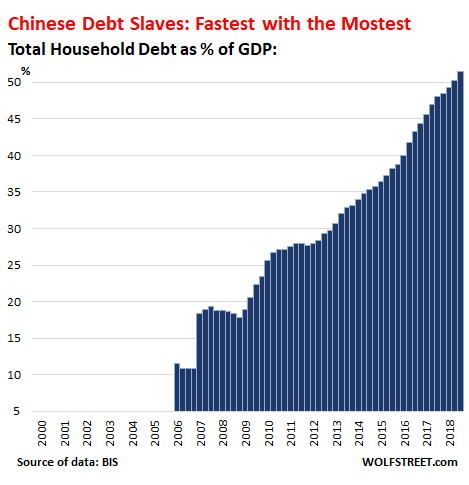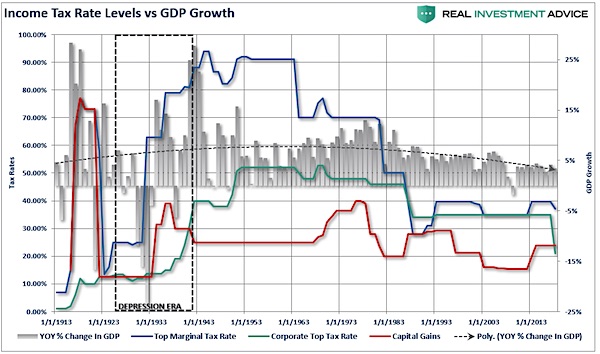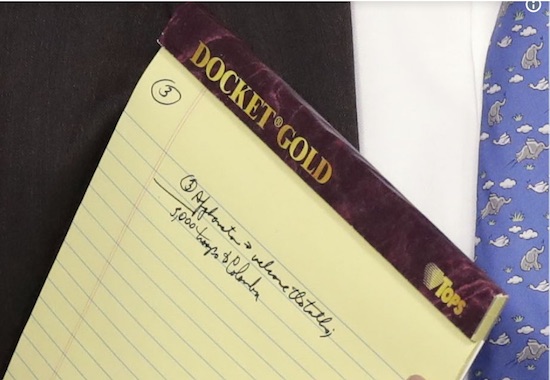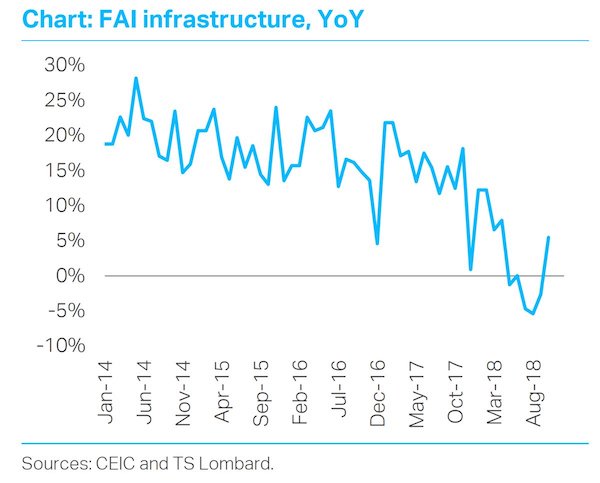
Marion Post Wolcott Signboard along highway in Alabama 1939

Between Halloween Brexit, EU leaders having a Macadamia Nut Parfait, and the black hole pictures described as “The Gates Of Hell At The End Of Space And Time”, what can I say? Can’t compete with that.
• EU Leaders Agree Brexit Delay Until Halloween (Ind.)
Theresa May is set to enrage her critics within the Conservative party after setting herself up to stay on as prime minister until the winter while presiding over a long delay to Brexit. She told MPs just weeks ago that she was “not prepared to delay Brexit any further than 30 June” as prime minister and said she would resign once this stage of talks was complete – prompting her rivals to gear up for a summer leadership contest. But as EU leaders met on Wednesday night to decide on another lengthy Article 50 extension, a Conservative source said the prime minister’s promised departure was tied to passing the withdrawal agreement rather than a specific date.
After six hours of talks late into the night leaders agreed to extend the new Brexit deadline until 31 October, with a potential summit in June to review the situation. Ms May tried to play down the consequences of the expected long extension as she arrived at the meeting on Wednesday evening, telling reporters that “what is important is that any extension enables us to leave at the point we ratify the withdrawal agreement” rather than the length. Asked whether the 30 June date was still a red line for the prime minister, the Tory source said: “She understands that the Conservative Party feels a sense that new leadership is required for the second phase of negotiations. That was the commitment she gave to her parliamentary colleagues and that’s one she stands by.”


Macadamia Nut Parfait
• Macron Enrages Other EU Leaders After Opposing Long Brexit Extension (G.)
The French president, Emmanuel Macron, enraged fellow leaders after standing alone against a long extension to Britain’s membership of the EU. Macron insisted on speaking last during a working dinner in Brussels on Wednesday night during which he set his stall against a longer extension up to 31 December backed by the German chancellor, Angela Merkel. Over a dinner of scallop salad, cod loin and macadamia nut parfait, it soon emerged that France was nearly isolated, with only a handful of member states, such as Belgium, sounding sympathetic to his arguments. The French president angered some EU leaders with his attempt to block a long extension of nine to 12 months that was favoured by the majority.
The European commission president, Jean-Claude Juncker, told the room that Macron’s opposition meant that “we are now only solving French domestic problems”. German officials were said to be “very irritated” with Macron. France argued that a long delay risked serious damage to the EU, an outcome Paris said was worse than no-deal. “We do not want to import Britain’s political crisis into the EU,” said an Élysée official. Theresa May’s talks with Jeremy Corbyn were not a justification “that we have a long extension without guarantees for the functioning of the European Union”. The French source said no-deal could not be ruled out, arguing that damaging the running of the EU was the worst possible outcome. “The default position is no deal. Endangering the functioning of the EU is not preferable to no-deal.”
After the new deadline was announced, Macron said leaders had found “the best possible compromise” because the 31 October date preserved EU unity, allowed the British more time and preserved “the good functioning of the European Union”.
We’re in Brussels reminding Europe’s leaders of the donkeys responsible for this Brexit shambles. SOUND ON.
(Location: European Parliament Liaison Office) pic.twitter.com/PbfzrUiW3N
— Led By Donkeys (@ByDonkeys) April 10, 2019

Well, that’s a good thing, no?!
• UK Car Production Could Halve In No-Deal Brexit Scenario (G.)
Car production in Britain could collapse by almost half by the mid-2020s in a no-deal Brexit scenario, with plant closures triggering job losses across the country, according to an Oxford University study. Matthias Holweg, an automotive expert at Oxford, said Britain leaving the EU without a deal and trading on World Trade Organization terms would trigger a big fall in output. According to the study, car production has already slipped by about 9% since the EU referendum in 2016. Production volumes have fallen from more than 1.7m cars per year to less than 1.5m, but could drop further to about 900,000 a year in 2026 if Britain leaves without a deal.
Holweg said the UK’s current volumes of production could not be sustained under a WTO trading regime with the EU, as higher levels of border friction and tariffs would render UK car manufacturing less competitive. Car plants across the country would at first be starved of investment before their owners eventually closed them. The study found that investment has already dropped by about 80% over the past three years. “This would invariably lead to a hollowing-out of the UK’s component supply chain, effectively condemning the automotive industry to a slow ‘death by a thousand cuts’,” said Holweg, professor of operations management at Oxford University’s Saïd business school. “The great and present danger is that the decisions on where to produce new models will continue to go against the UK.”

Michael Horowitz’s report is more interesting than the Mueller report.
• Peter Strzok Could Face ‘Serious’ Charges (Sara Carter)
Former FBI Agent Peter Strzok could face ‘serious’ charges for his involvement and actions in the bureau’s probe of Hillary Clinton’s use of a private server to send classified emails, as well as the FBI’s investigation into President Trump’s campaign, multiple sources with knowledge of Strzok’s actions told SaraACarter.com. Further, sources contend that the nearly year long investigation by DOJ Inspector General Michael Horowitz, will reveal explosive information and shed light on alleged malfeasance by FBI and DOJ officials directly involved in the Russia investigation. The Inspector General’s report may be completed as early as May or June, according to testimony provided this week by Attorney General William Barr.
Strzok who has already been investigated by Horowitz for his role in the FBI’s Clinton investigation is also expected to be named in the IG’s upcoming report on how the Russia investigation was handled by the FBI. He was removed from Special Counsel Robert Mueller’s team in 2017 and then fired from the FBI in August, 2018. He was fired by the FBI after an extensive review by Horowitz’s office into the FBI’s handling of the Clinton investigation and was removed from Mueller’s team after the IG discovered his anti-Trump text messages to his paramour former FBI Attorney Lisa Page.
“There are a number of individuals who are looking at Peter Strzok’s actions and inactions and how those actions affected both of the investigations he was involved in,” said a U.S. official, with knowledge. “Further evaluation of what Peter Strzok did or did not do needs to be evaluated thoroughly.” The official did not reveal what Strzok’s “actions or inactions” may have been but said “obstruction, is a serious concern.” Strzok “is in hot water,” said another government official, with knowledge. “I’m certain he’s not the only one.”

Between Horowitz and Barr, we’re going to have us some fun.
• William Barr on 2016 Elections: ‘I Think Spying Did Occur’ (CNS)
Attorney General William Barr told a Senate Appropriations subcommittee on Wednesday that spying did occur during the 2016 presidential election, but he needs to “explore” whether or not it was “predicated.” “News just broke today that you have a special team looking into why the FBI opened an investigation into Russian interference in the 2016 elections? I wonder if you can share with this committee who’s on that team, why you felt the need to form that kind of a team and what you intend to be the scope of their investigation,” Sen. Jeanne Shaheen (D-N.H.) asked Barr. “As I said in my confirmation hearing, I am going to be reviewing both the genesis and the conduct of intelligence activities directed at the Trump campaign during 2016.”
“A lot of this has already been investigated, and a substantial portion of it has been investigated and is being investigated by the Office of Inspector General at the department, but one of the things I want to do is pull together all the information from the various investigations that have gone on, including on the Hill and in the department and see if there are any remaining questions to be addressed,” Barr said. Shaheen asked Barr why he felt “a need to do that.” “For the same reason we’re worried about foreign influence in elections,” Barr said.

MICIMATT
• The Next Phase of Deep State-Gate (Ray McGovern)
Readers of The Washington Post on Monday were treated to more of the same from editorial page chief Fred Hiatt. Hiatt, who won his spurs by promoting misleading “intelligence” about weapons of mass destruction in Iraq and suffered no consequences, is at it again. This time he is trying to adjust to the fading prospect of a Deus ex Mueller to lessen Hiatt’s disgrace for being among the most shameless in promoting the Trump-Russia collusion narrative. He is not giving up. When you are confident you will not lose your job so long as you adhere to the agenda of the growing Military-Industrial-Congressional-Intelligence-Media-Academia-Think-Tank complex (MICIMATT if you will), you need not worry about being a vanguard for the corporate media. It is almost as though Hiatt is a tenured professor in an endowed chair honoring Judith Miller, the New York Times reporter who perhaps did most to bring us Iraqi WMD.
In his Monday column Hiatt warned: “Trump was elected with the assistance of Russian spies and trolls, which he openly sought and celebrated. But he did not (or so we are told) secretly conspire with them.” In effect, Hiatt is saying, soto voce: “Fie on former (now-de-canonized) Saint Robert of Mueller; we at the Post and our colleagues at The New York Times, CNN et al. know better, just because we’ve been saying so for more than two years.” Times executive editor Dean Baquet said, about the backlash to the Times‘ “collusion” coverage: “I have no regrets. It’s not our job to determine whether or not there was illegality.” CNN President Jeff Zucker said: “We are not investigators. We are journalists.” (One wonders what investigative journalist Bob Parry, who uncovered much of Iran-Contra and founded this site, would have thought of that last one.)

Take Lenin Moreno to The Hague.
• WikiLeaks Says Julian Assange Is Being Spied On In Ecuadorean Embassy (R.)
WikiLeaks founder Julian Assange has been the subject of a sophisticated spying operation in the Ecuadorean embassy where he has been holed up since 2012, the group said on Wednesday. “Wikileaks has uncovered an extensive spying operation against Julian Assange within the Ecuadorean embassy,” Kristinn Hrafnsson, WikiLeaks editor-in-chief said, adding that Assange’s “eviction” from the embassy could happen at any time. Hrafnsson did not immediately give evidence for his claims. Reuters was unable to independently verify the allegations. Assange’s relations with his hosts have chilled since Ecuador accused him of leaking information about President Lenin Moreno’s personal life. Moreno has said Assange has violated the terms of his asylum.
To some, Assange is a hero for exposing what supporters cast as abuse of power by modern states and for championing free speech. But to others, he is a dangerous rebel who has undermined the security of the United States. “We know that there was a request to hand over visitors’ logs from the embassy and video recordings from within the security cameras in the embassy,” Hrafnsson told reporters, adding that he assumed the information had been handed over to the administration of U.S. President Donald Trump.

Criminal behavior: “.. included recordings of Assange’s meetings with his lawyers and doctor.”
• Spanish Police ‘Recover Julian Assange Surveillance Footage’ (G.)
WikiLeaks has said it has uncovered a surveillance operation against Julian Assange at the Ecuadorian embassy and that images, documents and videos gathered have been offered for sale. Spanish police were said to have mounted a sting operation against unnamed individuals in Madrid who offered the material for sale in what lawyers and colleagues of Assange said on Wednesday was an attempt at extortion. Some of the material came from video cameras with a capacity to record audio and which had been installed last year, a press conference organised by WikiLeaks was told. WikiLeaks said material including video, audio, copies of private legal documents and a medical report had turned up in Spain, where a group was said to have threatened to start publishing unless they were paid €3m.
The Guardian reported last year that Ecuador had bankrolled a multimillion-dollar surveillance operation to protect and support Assange at the embassy, employing an international security company and undercover agents to monitor his visitors, embassy staff and even the British police. Kristinn Hrafnsson, the editor-in-chief of WikiLeaks, said he had met four individuals, one of whom he was told was a ringleader and who had prior convictions. There was a possibility that at least one was not a Spanish national, he added. The matter is now in the hands of an investigating Spanish magistrate, according to the whistleblowing website.
Hrafnsson said the surveillance at the embassy – which had led to Assange living a “Truman Show existence” – was part of an escalation designed to result in Assange being extradited to the US. “If you connect the dots it’s easy to draw that picture,” said Hrafnsson, who was appearing with the barrister Jennifer Robinson and Fidel Narváez, a former consul of Ecuador in London. It remained unclear whether Assange was planning to leave the embassy of his own accord at any point soon. His legal team said they would still need assurances from the UK government that Assange would not face onward extradition to the US. WikiLeaks said the surveillance had constituted a total invasion of privacy, which had included recordings of Assange’s meetings with his lawyers and doctor.

WikiLeaks:
Ecuador caught in espionage operation against its refugee Julian Assange which:
1. Spied on his legal, medical visits
2. Stole legal notes during the middle of a court hearing against them
3. Secretly cooperated with US
4. Tried to extort him for 3M Euro
• Spain Police Probe Extortion Scheme Involving Surveillance on Assange (Lauria)
A Spanish judge is investigating an alleged extortion scheme in which suspects in Madrid offered video and audio surveillance to the editor of WikiLeaks in exchange for €3 million, WikiLeaks said on Wednesday. The surveillance was taken over the past year inside the Ecuador embassy in London, where WikiLeaks founder Julian Assange has legally been granted political asylum since 2012, said Kristinn Hrafnsson, the WikiLeaks editor, at a press conference in the British capital. Included in the “trove” of material was a copy of a legal document regarding Assange’s defense strategy that was briefly left behind in a conference room in the embassy, Hrafnsson said. “It is a grave and serious concern when legal meetings are being spied upon and legal documents are stolen,” he said. “That is something that not even prisoners have to endure.”
Assange was also filmed being examined by his doctor in the embassy, Hrafnsson said. “Nobody expected that this was recorded and stored and found its way to some dubious individuals in Spain,” he said. Jennifer Robinson, Assange’s lawyer, called it a breach of attorney-client privilege. “The documents you have seen [presented at the press conference] demonstrates just how much surveillance he has been under and it is a breach of confidence for us, his lawyers, and his doctors to provide medical care in the embassy,” Robinson said. “This is a severe breach of attorney-client privilege and fundamentally undermines our ability to defend and provide defense to Julian Assange.”
Hrafnsson communicated with the alleged extortioners and was given samples of what they possessed, the WikiLeaks editor said. He then traveled to Spain and secretly videotaped a meeting with “four individuals” in which Hrafnsson learned the extent of the material that they possessed. They told them him that €3 million was “a good deal” as they had had offers of €9 million for the material. Hrafnsson then went to the Spanish police who opened an investigation. He said he knew the identity of one of the four who had a prior conviction on similar charges and was seen as the “ringleader.”
Aitor Martinez, the Assange lawyer who said he’d briefly left the legal document in the embassy conference room that was copied, then took part in a sting operation with the police. He wore a wire as he met with the alleged extortioners in Madrid, Hrafnsson said. A full investigation by a special extortion team was then opened and the case is now in the hands of an investigative judge, he said. “Extortion is a serious matter,” Hrafnsson said, “but of greater concern to me is that this is material gathered by spying by the government of Lenin Moreno and officials who work on his behalf against an individual who was granted diplomatic protection by the Ecuadorian government.”

There are clever people at the IMF, they’re just mostly silenced.
• Short-Term Growth Policies Risk New Financial Crisis – IMF (G.)
Central banks are running the risk of a severe financial crisis through policies aimed at boosting short-term economic growth, the International Monetary Fund has warned. In its half-yearly global financial stability report, the IMF said the removal of the threat of higher interest rates had prompted a rapid recovery in financial markets after last autumn’s turbulence but would lead to a fresh buildup in already high levels of debt. The report expressed concern about a sharp increase in lower quality corporate bonds, the vulnerability of European banks to falling government bond prices, debt levels in China, flows of hot money in and out of developing countries, and the risk of house price crashes.
The report said the tightening in financial conditions during the final three months of 2018 – when markets were unnerved by the possibility of the US Federal Reserve tightening policy throughout 2019 – had been too short-lived to have a material impact on the buildup of vulnerabilities. Tobias Adrian and Fabio Natalucci, two IMF officials, said in a blogpost released alongside the report that policymakers faced a dilemma as they sought to counter a slowdown in the global economy that has seen the IMF cut its growth forecast to 3.3% this year.
“In the United States, the ratio of corporate debt to GDP is at record-high levels. In several European countries, banks are overloaded with government bonds. In China, bank profitability is declining, and capital levels remain low at small and medium-size lenders,” Adrian and Natalucci said. “By taking a patient approach to monetary policy, central banks can accommodate growing downside risks to the economy. But if financial conditions remain easy for too long, vulnerabilities will continue to build, and the odds of a sharp drop in economic growth at some later point will be higher.”

“The average frequency per meeting minutes of “strong,” “strongly,” and “stronger” between January 2013 and December 2017..”
• Fed Hawk-o-Meter Jumps 18% (WS)
My fancy-schmancy Fed Hawk-o-Meter jumped 18% from 22 to 26, after having been on a downtrend for four Fed meetings in a row. Something’s up. The Fed Hawk-o-Meter checks the minutes of the FOMC meetings for signs that the Fed sees the economy as strong and that rates should rise; or that the economy is OK but not strong enough to raise rates further; or that the economy is spiraling down to where rates need to be cut. It quantifies and visualizes what the Fed wishes to communicate to the markets by counting how often “strong,” “strongly,” and “stronger” appear in the minutes to describe the economy. In the minutes of the March 19-20 meeting, released this afternoon, those words appear 26 times, up 18% from 22 times in the prior minutes:
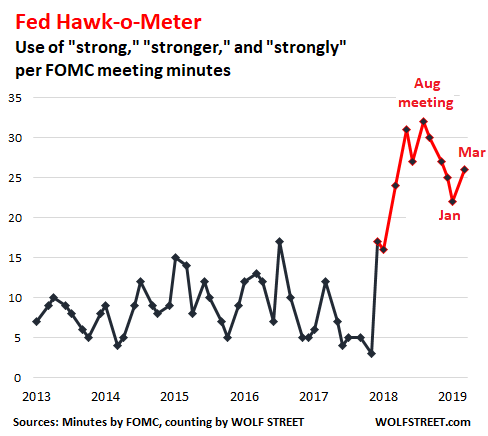
The average frequency per meeting minutes of “strong,” “strongly,” and “stronger” between January 2013 and December 2017 was 8.7 times. The 26 mentions in the March-meeting minutes were 226% the pre-redline average. The 18% jump in the March minutes from the January minutes is particularly striking because the Fed had spent the prior four meetings backing off ever so gingerly its bullish assessment of the economy. But in March, the direction changed. Yet the reading still hasn’t jumped back to the peak levels of last August, when the Fed, with the economy running red hot, was telling the markets that it would raise rates four times in the year.
The current reading of 26 is just above the average over the past 11 meetings minutes of 25.2, starting with the December 2017 meeting, when the Hawk-o-Meter started redlining.

Stop killing weeds. Because you’re killing life itself.
• The Family That Took On Monsanto (G.)
Edwin Hardeman and his wife, Mary, never expected that they would become de facto leaders of the federal court fight against the world’s most widely used weedkiller. They just wanted Monsanto to acknowledge the dangers – and potentially save other families from the horror they endured. “This is something that was egregious to me. It was my personal battle and I wanted to take it full circle,” said Edwin, whose cancer is now in remission. “It’s been a long journey.” Mary bristled when she thought about Monsanto’s continued defense of its chemical: “They should have been with us when we were in the chemo ward … not knowing what to do to relieve the pain.“ I get angry,” she added. “Very angry.”
Monsanto first put Roundup on the market in 1974, presenting the herbicide, which uses a chemical called glyphosate, as a breakthrough that was effective at killing weeds and safe. The product has earned the corporation billions in revenue a year, and glyphosate is now ubiquitous in the environment – with traces in water, food and farmers’ urine. But research has repeatedly challenged Monsanto’s assertions that Roundup is safe, culminating in a key 2015 ruling by the World Health Organization’s International Agency for Research on Cancer (Iarc), which said glyphosate was “probably carcinogenic to humans”. The Iarc classification opened the floodgates to litigation alleging that Roundup exposure caused their NHL, a cancer that affects the immune system.

Let’s call it Progress, shall we?
• Chinese Scientists Put Human Brain Genes In Monkeys (TR)
Human intelligence is one of evolution’s most consequential inventions. It is the result of a sprint that started millions of years ago, leading to ever bigger brains and new abilities. Eventually, humans stood upright, took up the plow, and created civilization, while our primate cousins stayed in the trees. Now scientists in southern China report that they’ve tried to narrow the evolutionary gap, creating several transgenic macaque monkeys with extra copies of a human gene suspected of playing a role in shaping human intelligence. “This was the first attempt to understand the evolution of human cognition using a transgenic monkey model,” says Bing Su, the geneticist at the Kunming Institute of Zoology who led the effort.
According to their findings, the modified monkeys did better on a memory test involving colors and block pictures, and their brains also took longer to develop—as those of human children do. There wasn’t a difference in brain size. The experiments, described on March 27 in a Beijing journal, National Science Review, and first reported by Chinese media, remain far from pinpointing the secrets of the human mind or leading to an uprising of brainy primates. Instead, several Western scientists, including one who collaborated on the effort, called the experiments reckless and said they questioned the ethics of genetically modifying primates, an area where China has seized a technological edge. “The use of transgenic monkeys to study human genes linked to brain evolution is a very risky road to take,” says James Sikela, a geneticist who carries out comparative studies among primates at the University of Colorado.

The object in that photo no longer exists. What you see is what it looked like 55 million years ago.
• The Gates Of Hell At The End Of Space And Time (Nature)
Astronomers have finally glimpsed the blackness of a black hole. By stringing together a global network of radio telescopes, they have for the first time produced a picture of an event horizon — a black hole’s perilous edge — against a backdrop of swirling light. “We have seen the gates of hell at the end of space and time,” said astrophysicist Heino Falcke of Radboud University in Nijmegen, the Netherlands, at a press conference in Brussels. “What you’re looking at is a ring of fire created by the deformation of space-time. Light goes around, and looks like a circle.” The images — of a glowing, ring-like structure — show the supermassive black hole at the centre of the galaxy M87, which is around 16 megaparsecs (55 million light years) away and 6.5 billion times the mass of the Sun.

They reveal, in greater detail than ever before, the event horizon — the surface beyond which gravity is so strong that nothing that crosses it, even light, can ever climb back out. The highly anticipated results, comparable to recognizing a doughnut on the Moon’s surface, were unveiled today by the Event Horizon Telescope (EHT) collaboration in six simultaneous press conferences on four continents. The findings were also published in a suite of papers in Astrophysical Journal Letters on 10 April. [..] Nearly a century ago, physicists first deduced that black holes should exist from Albert Einstein’s general theory of relativity, but most of the evidence so far has been indirect. The EHT has now made a new, spectacular confirmation of those predictions.

The team observed two supermassive black holes — M87’s and Sagittarius A*, the void at the Milky Way’s centre — over five nights in April 2017. They mustered enough resolution to capture the distant objects by linking up eight radio observatories across the globe — from Hawaii to the South Pole — and each collected more data than the Large Hadron Collider does in a year. It took two years of work to piece the pictures together.











